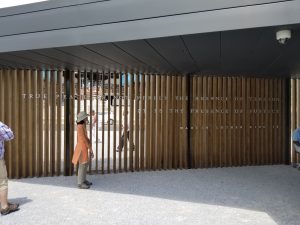Blog Blog Day 1 – June 25, 2018 Blog Day 2 – June 26, 2018 Blog Day 3 – June 27, 2018 Blog Day 4 – June 28, 2018 Blog Day 5 – June 29, 2018 Blog Day 6 – June 30, 2018 Blog Day 7 – July 1, 2018 Blog Day 8 – July 2, Read More ...

ICRPS 2018 Summer Institute | Tuskegee, AL | June 24-July 07
"Social Justice, Rural and Natural Resource Policy"
Written by: Riikka Kangas, Jabeka Macklin, & Sandra Moore.
We started the day boarding a bus at the Kellogg Center at Tuskegee University and picking up a few local students at a gas station along the way. Once all of us were on board the bus we headed down Interstate 85 for a 45-minute drive to Montgomery.
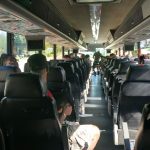
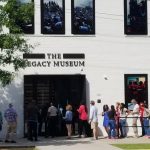
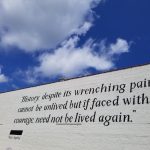
Our first stop was the Equal Justice Initiative Legacy Museum. This legacy museum opened in 2018 and shows the history of the injustice towards African Americans in the United States. From displays in the center we learned many astonishing facts such as that between 1820 to 1860 the population of slaves in Alabama rose from 41,879 to 435,080, that Alabama banned the presence of “free blacks” during slavery times, and after emancipation in 1863 there were still strong proponents of slavery such as Mississippi’s Governor who stated that “they (African Americans) are to be returned to a condition of serfdom. An era of second slavery”.
Many of us stated this was an emotional visit. Many felt that it was unbelievable that humans could treat other humans that way, or how it was possible that so many people could have committed these atrocities and how so many people could have followed such immoral thoughts. Many others also thought it was overwhelming to see things you already knew in such an honest, authentic manner, for example in the entrance hallway of the museum there was the portrayal of an auction block with holograms of slaves in holding cells before they were sold.

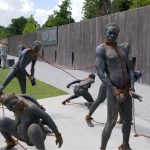
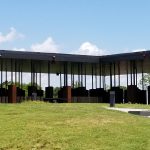
Our next stop was the National Memorial for Peace and Justice, a six-acre site overlooking Montgomery that is a memorial for the more than 4,400 African American men, women, and children who were killed by the terrorist act of lynching between 1877 and 1950.

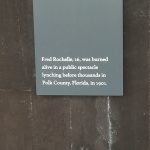
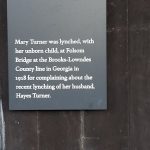
As you enter the site, you walk up an elevated path to the top of a hill where there are 800 steel monuments from each county where the lynching’s occurred throughout the United States. Each box was inscribed with the names (if known) and dates of the individuals who died. There was also a section describing why some of these people were lynched. The names of those known and unknown were verified by at least two written documents. Again, an emotional site to visit for the group.
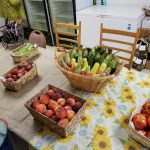
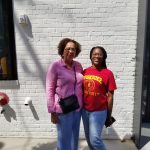
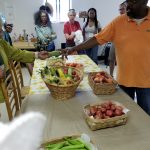
Boarding the bus again we headed back toward Tuskegee to visit the Al Hooks farm, a small processing farm, led by Demetrius Hooks and his dad Al Hooks. The farm processes and supplies various produce to local grocery stores and farmer’s markets.
Back on campus, we debriefed as a group on the day’s visits. One of the local participants, Kara, told us how our past connects to our present – she was able to confirm her own family history when she saw four of her relatives names at the Equal Justice Legacy Museum on the Community Remembrance Project Exhibit.
The final session of the day was Disparities, Race, and Social Justice. We had two presentations from faculty – Philomena De Lima led a discussion on intersecting identities, rurality and implications for rural policy and Wayne Kelly discussed community resilience and youth engagement. We concluded with an activity that made us realize that despite our differences we have many commonalities.
